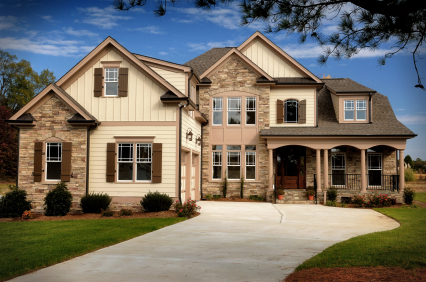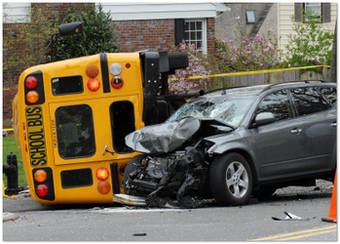
by Eddie Rodriguez, CAIB | Jul 12, 2011 | Research Centre
What you’ll discover in our “home insurance” articles:
- How your home may not be fully rebuilt – even though you have insurance!
- 11 ways to save money on your home insurance – including how to catch your insurer automatically increasing your premium every year
- SIX primary kinds of insurance in your home policy? Yes … and the right decision for each one
- The secret to brushing off a lawsuit
- How your jewelry and other personal property are NOT covered – and what to do about it!
- Why what’s not covered is more important than what is
- And more!
Your home is probably your most valuable asset. It is also a huge risk for you financially.

What if something happens to it?
A fire? A flood? Vandalism? Will your insurance policy actually pay for the damage? Will it pay for ALL of it?
What if someone visiting you slips and falls and suffers a serious injury? And sues you? An accident like that could put a dent — or worse — in your financial security.
For most people, insurance is a mystery. They know they need to have insurance for their homes (mortgage lenders require it), but they don’t understand the protection provided by the policy. And, more importantly, they don’t understand what their policy does NOT cover and what to do about that.
All homeowner’s insurance is not created equal. In fact, almost none of it is. There are thousands of different products out there, from hundreds of insurance companies. And your policy includes literally dozens of options and decisions you must make that determine how much insurance protection you actually have. Your home policy is not a commodity. It’s something tailored specifically to your needs and desires.
Six Primary Coverages Provided By Your Home Policy
Your home policy protects you in six primary ways. You’ll find these listed on your policy’s “Declarations” page. Here’s what they mean to you.
Dwelling
The word Dwelling in your home policy essentially refers to your home itself. It includes attached structures, as well … like an attached garage. The Dwelling Limit (or Amount of Insurance) stated on your Declarations page indicates the most the insurance company will pay to replace your home if it’s destroyed by a covered claim. Is it enough?
Warning: Don’t make the mistake of thinking your home is fully covered just because you have an insurance policy! You must make sure your Dwelling Limit is enough to rebuild your home. How?
Contact our office and one of our brokers can run a replacement cost estimate that calculates the cost to rebuild your particular home. Be sure to adjust the amount of insurance for your dwelling appropriately. If you don’t you may not have enough insurance to replace your home if disaster strikes.
Note: Some policies include built-in protection above the stated Dwelling Limit – usually a percentage of the Dwelling – just in case the estimate is too low. Be sure to discuss this with us as an additional protection feature. It’s probably worth having.
Other Structures
The most common Other Structures are sheds, stand-alone garages (known as “detached” garages in insurance terms), barns, pool houses, etc. These structures are not directly attached to your home, the “dwelling”.
Other Structures have their own protection limit – the most your company will pay to rebuild them – as stated on your Declarations page. This limit will be significantly less than the dwelling limit … usually 10% – 20% of the dwelling
For most people that’s plenty of insurance for other structures. But not for everyone. You need to know what it would cost to rebuild or replace those structures if they’re destroyed. Discuss it with the licensed professionals in our office. You can buy more protection for your other structures if you need it.
Personal Property
Your personal property is all your stuff – furniture, clothing, electronics, appliances, art collection, jewelry, etc. It, too, has its own protection limit stated on your Declarations page. And, again, this amount is the most the insurance company will pay to replace your personal property.
Your personal property limit is usually 70% – 75% of your dwelling limit. However, you can adjust this upward if you need more protection, Discuss your options with us. We’re here to help!
Regardless of the protection limit for your personal property, there’s a very important question you must get answered. How is your property protected … on an “actual cash value” basis or a “replacement cost” basis? The difference is huge!
In very basic terms, if your property is protected on a replacement cost basis the insurance company will replace your old stuff with new stuff. For example, if your 5-year old TV is destroyed in a covered claim, the company will pay for a brand new TV. That’s a good deal for you.
But if your property is protected on actual cash value basis, an “allowance for depreciation” is applied to the cost of a new TV based on the age of your destroyed TV. The result is you get a settlement amount less than the cost of a new TV. To buy a new TV you’ll have to come up with the difference out of pocket. Not as good a deal for you.
Clearly, insuring your personal property on a replacement cost basis is much better protection than actual cash value. Sometimes it costs a bit more, but not always. Make sure you know how your policy works and check the price both ways. Make the right decision for you.
Loss of Use
If your home is badly damaged you won’t be able to live in it while it’s being fixed or replaced. That means you may have to pay rent somewhere while you’re also paying your mortgage. The Loss of Use coverage on your home policy pays those additional expenses for you.
Your Declarations page may state a dollar limit for this coverage, or it may state a time limit. If there is a dollar limit, this is the most the insurance company will pay for these expenses. If there’s a time limit, your insurance will pay all covered expenses regardless of the amount but only for the specified period.
Liability
Your liability coverage pays if someone sues you for their injuries due to a covered claim. When we think of such accidents we most commonly think of injuries that occur on your property – someone slips and falls, a dog bite, etc.
However, the liability protection under your home policy extends beyond your property to your everyday life. For example, your home policy could also protect you if you knock someone over with a shopping cart at the grocery store.
Liability insurance is all about protecting your assets from someone who sues you. So, you should have at least as much liability insurance as your financial worth. However, more than that may be prudent, and you should discuss your needs and risks thoroughly with a licensed broker in our office. Your current liability limit will be stated on your Declarations page.
Medical Payments to Others
This pays medical bills for a guest who is injured on your property or in another covered claim. The idea is to do the right thing for someone – pay their medical bills – and then hope they don’t sue you. This protection is inexpensive, but could save you major hassles by preventing a lawsuit.

by Eddie Rodriguez, CAIB | Jul 11, 2011 | Research Centre
In addition to buying “optional coverages” for extra protection, you have the option to increase the coverage of some of the mandatory coverages you already have (such as the Liability and Accident Benefits).
Let’s talk about that briefly:
How much insurance do you need?
Bodily Injury Liability
You can buy the minimum required by law: $200,000. Or you can buy limits as high as $1000,000, even $2 million. Remember that someone you hit can sue you for everything you have.
* Tip. If you have a home, own stock and have a decent income, you should probably buy, at minimum, limits of 1 million. If you have more than $300,000 in assets, you should buy higher limits or an umbrella policy. Consult with your professional broker about this!
Property Damage Liability
Several years ago, the $200,000 minimum was considered “more than enough” for this coverage. Not anymore. You should seriously considerat least 2 million of coverage.
In Ontario, the limit you select form “Bodily Injury Liability” will automatically be the same limit you’ll buy for “Property Damage Liability” and for the “Family Protection Coverage” we mentioned in this other article.

Collision
Consider how much you can afford to pay to have your car fixed if you have an accident. Auto policies have several deductible options.
* Note. A deductible is the part you pay before the insurance kicks in. You can buy deductibles of $500, even $1,000. The lower the deductible, the more this coverage will cost.
Unless you’re planning to have a lot of accidents, it’s probably a good idea to have a deductible of at least five hundred dollars. (By the way, the “collision deductible” does not apply if someone else hits you and that person is charged “100% at fault” by their insurance company. – If the other person is found only “50% at fault” (as an example), then you would have to pay 50% of your deductible.)
Comprehensive
Like collision, there’s a deductible with comprehensive, although it is often lower. For example, if you have a $500 deductible for collision, your comprehensive deductible may be, say, $300.
* Note. While collision and comprehensive will pay for damage or loss to your car, neither coverage will pay for everything on or in your vehicle. Most policies exclude things like CB radios, two-way radios, car phones, cassettes and CDs. – The “contents” of your car, may be covered by your homeowner’s, condo owner’s or renter’s insurance policy … if you have one.
If you add special features to pickups, vans or SUVS, these things probably will be excluded as well. In fact, it’s a good idea for you to talk to your insurance broker about any high-tech equipment or special features you have added to your vehicle. Many, perhaps even most, of these features aren’t covered in the standard policy. It is possible, however, to obtain special coverage for any high-tech equipment or special features your vehicle may have.
Your MIB broker can advise you of the options.

by Eddie Rodriguez, CAIB | Jul 11, 2011 | Research Centre
Auto insurance is a product with a few distinct coverages.
Let’s look at them briefly here:
1. Bodily Injury Liability (Mandatory)- This pays the medical and other expenses of those people injured or even killed in accidents you cause. In Ontario, you are required to have a minimum coverage of $200,000.
2. Property Damage Liability (Mandatory)- This covers the damage your car causes to property such as garages, buildings, lampposts, fences, whatever. This is also mandatory in Ontario, with a minimum required coverage of $200,000.
3. “Accident Benefits” (Medical Payments, etc.) (Mandatory) – This pays medical, and even funeral, expenses for you as well as members of your family and passengers in your car if it is involved in a collision, regardless of who caused the accident. It also covers you as a pedestrian if a vehicle hits you.

*TIP: This very complex section of the Ontario Automobile Policy changed as of September 2011 – Ask your MIB broker about the differences, and find out if you need to increase your coverages to the “old standards”.
4. Direct Compensation – Property Damage (Mandatory) – Under certain conditions, covers you in Ontario for damage to your automobile and to property it is carrying when another motorist is responsible.
* Why is it called “Direct Compensation”? Because you’re directly compensated by your own insurance company – even though another party is fully or partially responsible – This saves you the expense and trouble of having to sue the other party and wait a long time to get your car fixed.
5. Uninsured Automobile (Mandatory) – This coverage protects you if you are injured or killed by an UNinsured motorist or by a hit-and-run driver. It also covers damage to your automobile caused by an identified uninsured motorist . (By the way, that’s an over-simplified summary of a very complex part of the Ontario Auto Policy).
* Fines for vehicle owners, lessees and drivers who do not carry valid automobile insurance can range from $5,000 to $50,000 …. And still, there are lots of people out there driving WITHOUT insurance. One report estimates that 1 in every 20 Ontario drivers is driving WITHOUT insurance.
6. Comprehensive – This OPTIONAL but highly recommended coverage includes protection against certain “specified perils” (^ ^see below.) as well as other insured damage to your car resulting from something other than a collision with another vehicle (See “Collision” below). For example, the Comprehensive coverage will pay for damage caused by vandals or a wind-blown tree hitting your car.
^ ^ In regards to Specified Perils the Ontario Automobile Policy says: “we will only pay for losses caused by fire; theft or attempted theft; lightning, windstorm, hail, or rising water; earthquake; explosion; riot or civil disturbance; falling or forced landing of aircraft or parts of aircraft; or the stranding, sinking, burning, derailment or collision of any kind of transport in, or upon which a described automobile is being carried on land or water”.
7. Collision – This OPTIONAL but highly recommended coverage is for damage done to your car when it collides with other vehicles (your fault) or other objects (again, your fault).
It also covers damage to your vehicle caused by an unidentified vehicle or object. For example: you park in the parking lot of the convenience store and go in to buy something …. When you come out of the store, you notice that your car has been hit and damage by another car … but the other driver took off and no one saw him or her. In this case, your policy would cover damage to your car IF you have this OPTIONAL coverage.
In Ontario, instead of buying the Collision and Comprehensive coverages separately, you can get the “All Perils” option.
What is it?
All Perils (OPTIONAL) -this option combines the coverages of Collision or Upset and Comprehensive.
In addition, this coverage (All Perils) includes loss or damage caused if a person who lives in your household steals a described automobile. Coverage also applies if an employee who drives or uses, services or repairs a described automobile, steals it.
In Ontario we also pay for an important type of protection called “Family Protection Coverage” (OPCF 44R) – Some find the name (Family Protection Coverage) misleading or confusing. Let’s clarify briefly what this coverage does for you:
You see, many of those who do have insurance don’t have enough to cover the damages and injuries that would result in a major collision.
What if YOU getting into accident with someone who doesn’t have ENOUGH insurance for the damages they cause to you?
If you don’t have this coverage, which is often referred to as Under-Insured motorist, you are taking a risk.
If you do have this coverage, your insurance company will pay (or as they say: “indemnify an eligible claimant”) for the amount that you are legally entitled to recover from an inadequately insured motorist as compensatory damages in respect of bodily injury to or death of an insured person arising directly or indirectly from the use or operation of an automobile.

by Eddie Rodriguez, CAIB | Jul 11, 2011 | Research Centre
In Ontario, auto insurance is mandatory. But the government doesn’t require you to buy ‘Accident Benefit upgrades ‘ or the so-called ‘full coverage’. You are only required to buy the minimum liability coverage*. This is so you can pay for some of the damage your car does to other people or other people’s property..
* In this other article, I’ll point out OTHER ‘insurance coverages‘ that are also mandatory in Ontario.
How much are you required to buy? In Ontario, the minimum liability amount is $200,000. That’s not much. In fact, it’s next to nothing.

* Tip. The minimum amount of insurance required in Ontario is NOT much. Seriously consider getting more coverage ($2,000,000.00 or more) in order to protect your financial health.
* Note. Notice that mandatory auto insurance laws in Ontario do not require you to buy certain coverages for your own car. It’s up to you to decide if you want to buy protection against such risks as vandalism, fire, theft and damage to your car in case of an “at-fault” collision.
If you buy just the minimum coverage required by law, you are leaving your assets at considerable risk. Your car, obviously. And your home, if you are at fault in an accident that causes serious injuries to the other parties.
How far do you think the minimum $200,000 will go if you hurt somebody and they can’t work for 5 years?
Not far enough!





